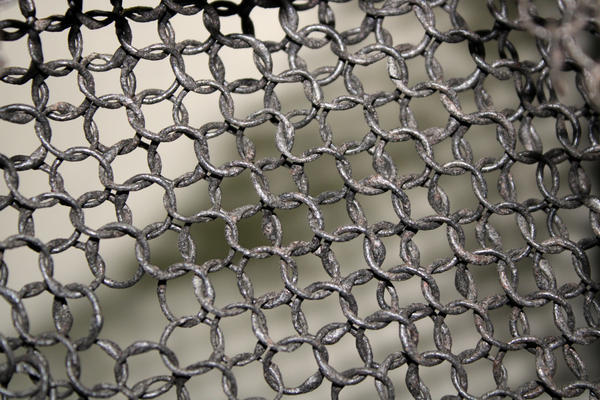Chain armor was the most widespread type of armor with the Russian warriors of X–XIII centuries. It was made from small metal rings connected in various manners, and then fixed with rivets. Such armor withstood hits by spear, saber, sword or dagger. Some varieties also protected from arrows.
Chain armor
Creation period
XIII century
Dimensions
75x102 cm
Technique
Steel, forging
Collection
Exhibition
0
Open in app#1
Chain armor
#2
#4
Before 1971, archaeologists discovered in various Russian regions 127 ancient Russian chain armors, with 40 fully preserved and fragments remaining of the rest.
The chain armor represented in Bryansk Antiquities exhibition was discovered in 1966 in the village of Novy Ropsk, Klimov Region. According to the archaeologists the discovery looked like ‘a lump of rusty iron’. It was flattened out, cleaned from traces of corrosion, deformed parts were straightened.
#5
The restoration revealed that the chain armor was well preserved. It consisted of 39 thousand metal rings, each about 8 millimeters in diameter. миллиметров. It had short sleeves, was 75 centimeters long, with the shoulder width of about one meter. The armor weighed 6.6 kilograms.
#3
Chain armor
#6
The chain armor differed from other types in that it protected only part of the body — from the shoulders to mid-thighs. It was lighter than a harness that fully covered a warrior. A quilted arming doublet was worn under chain armor: it provided additional protection and did not let metal rings scratch the body.
#7
Making of one chain armor could take several months. It was woven from thin metal wire that was produced in different ways: thin rods were forged, narrow strips were cut from metal sheet and polished or stretched. Then the wire was spooled on a special bar to produce a spiral. It was then cut into rings of the same diameter. Open ends were riveted or welded in the weaving process.
Rows of riveted and welded rings usually alternated in the armor making it stronger and more reliable. The elements were connected by various methods, the most popular one was fixing every ring to the four neighboring rings. Sometimes bronze or copper parts were added to the silver ones, most often for edge trim. If armor was made to order, inscriptions were sometimes made on the rings.
#8
State budgetary cultural institution Bryansk State Regional Ethnography Museum
read morehide
00:00
00:00
1x
Chain armor
Creation period
XIII century
Dimensions
75x102 cm
Technique
Steel, forging
Collection
Exhibition
0
Open in app
Share


